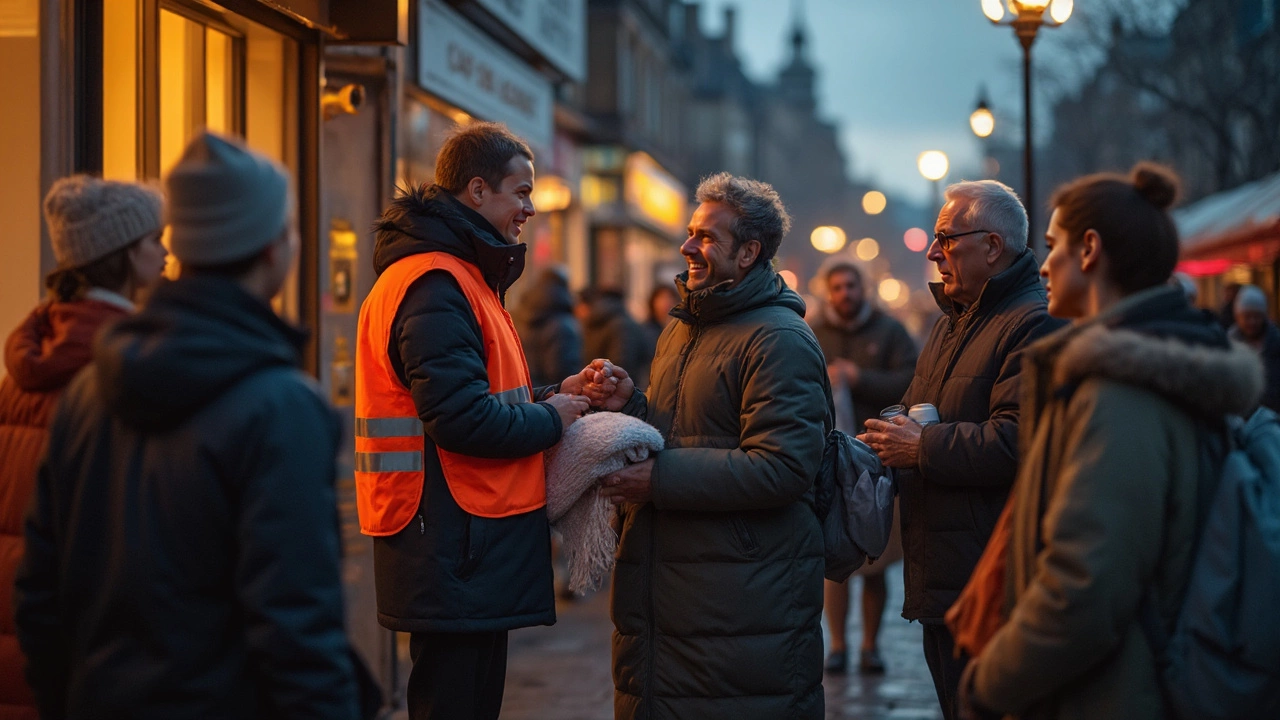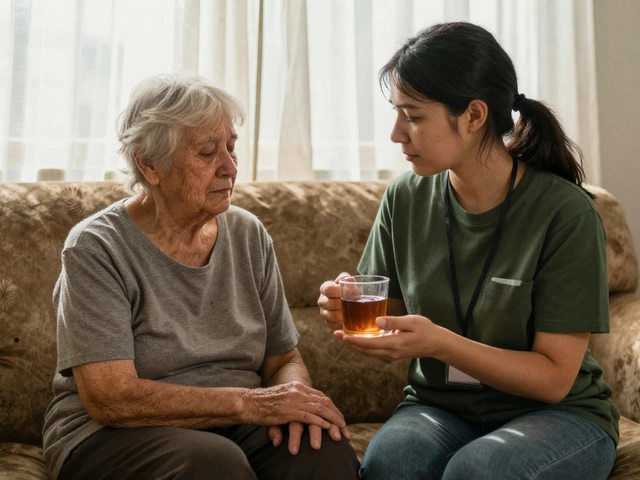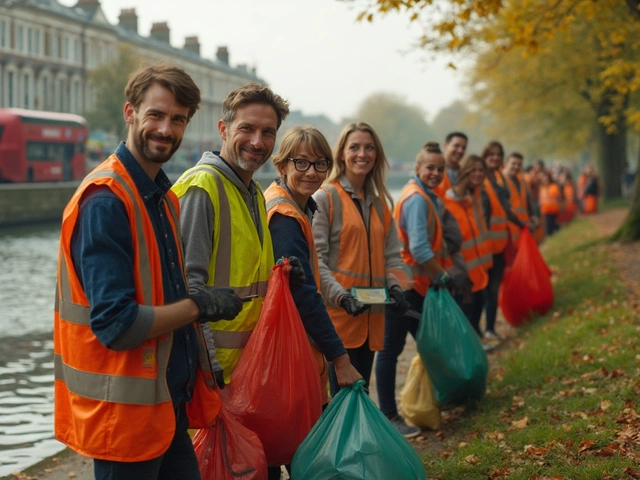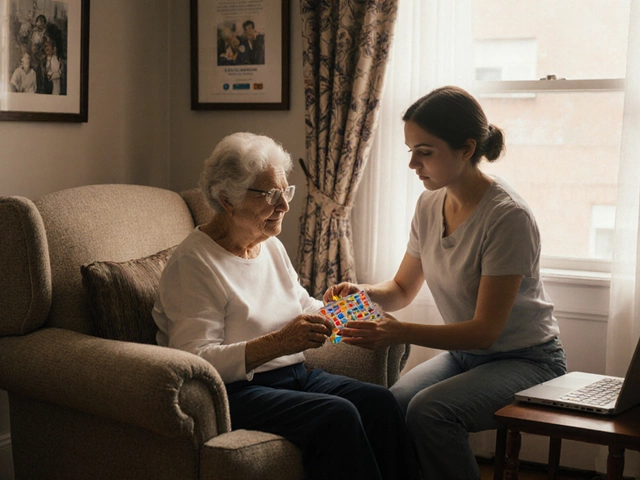Best Places to Go When Homeless: Finding Shelter That Works
Stuck without a place to stay can feel like you’ve landed in a maze with no signs anywhere. The truth is, the best place to go when homeless depends on where you are, what you need, and who’s with you. Not all shelters are the same, and finding the right one can make a tough situation a bit less terrifying. Some cities even have waitlists for beds, and others work on a first-come, first-served basis, so knowing how things work in your city can really help.
If you’ve never been homeless before, you might picture giant rooms lined with cots, but there are options you might not consider. Some shelters are open 24/7 and let you keep your stuff close, while others are only open at night and ask you to leave during the day. Families, teens, and single adults all have different shelters geared just for them. If safety is top of mind (and it should be), check out reviews online or ask around – the people actually staying at these places know what’s up. Not sure where to start? Many public libraries and community centers keep updated lists of shelters nearby and can point you in the right direction without any drama.
- Why Finding the Right Shelter Matters
- Types of Homeless Shelters
- How to Get Into a Shelter Fast
- Safe Spots Beyond Shelters
- What You Need to Bring and Know
- Extra Resources and Support
Why Finding the Right Shelter Matters
Not all homeless shelters are created equal, and where you go can change everything. A good shelter gives more than just a bed—it means a chance to feel safe, maybe get a meal, and sometimes even help with finding work or getting health care. But some places don’t offer privacy, kick you out during the day, or just aren’t safe. Scouting out the right spot can actually make the difference between getting back on your feet and just getting by.
It surprises people that in the U.S. alone, about 580,000 people experience homelessness on any given night, according to HUD's most recent annual report. If you pick a shelter without checking, you might end up somewhere with bed bugs, theft, or even risk of violence. Some shelters specialize—like women-only, family centers, or ones for youth under 25. These specialized spots are usually safer and connect you to help that matches your situation.
Things people look for in the best place to go when homeless often include:
- Safety and security—look for shelters with staff onsite and rules against fighting.
- Access to food and showers—not all do meals or let you use the bathroom after dark.
- Caseworkers or resource connections—places that help you look for housing or a job.
- Family or pet-friendly rules—some won’t allow kids or animals, which can split people up.
Don’t just follow a random tip or old info online. Many places change their rules or close with little warning. It’s smart to call ahead, visit during the day if they let you, and trust your gut. Shelters that feel organized and have basic rules often keep things safer for everyone inside. That’s what turns a spot from just a roof into an actual step toward something better.
Types of Homeless Shelters
If you've got nowhere to crash, knowing the difference between homeless shelters can make all the difference. They don't all work the same, and some are a better fit for you than others. Here’s a breakdown of the main types you might run into:
- Emergency Shelters: These are the most common. When you think of where to go when homeless, this is usually it. They’re open to anyone in crisis, meant for short stays, and they’re usually first-come, first-served. Some let you stay a night or two, others for up to 30 days if things are dire.
- Family Shelters: Not all shelters allow kids, but these are set up for families with children. Sometimes you’ll get a private room or at least some space with your family. These spots fill up super fast, especially in big cities.
- Youth Shelters: If you’re under 25, youth shelters can keep you safe from the problems adults sometimes face in regular shelters. Staff usually know how to help with school trouble, job stuff, or abuse.
- Transitional Housing: More than just a bed—these programs let you stay for months and help you get back on your feet. You usually have to apply, and they expect you to work towards long-term housing or a job.
- Domestic Violence Shelters: If you’re escaping an abusive situation, these shelters keep your location private. You’ll get safety, support, sometimes even help with legal paperwork or counseling.
Different shelters have different rules. Some won’t let you in if you’ve got pets, while others are becoming “pet-friendly,” which is huge if your animal is your only family. A few even let people in 24/7 and let you store personal stuff onsite. In most major cities, the National Alliance to End Homelessness found nearly 65% of emergency shelter users are single adults, with families and young people making up the rest. Spaces fill up in winter and when storms hit, so always call ahead if you can.
| Shelter Type | Main Benefit | Who It's For |
|---|---|---|
| Emergency Shelter | Quick, short-term bed | Anyone in crisis |
| Family Shelter | Privacy for families | Parents with kids |
| Youth Shelter | Special help for young people | Under 25s |
| Transitional Housing | Longer stays, support services | People working toward independence |
| Domestic Violence Shelter | Confidential and safe | Survivors of abuse |
Some places, like big cities and college towns, have more options than rural areas, where you might have to travel farther. When in doubt, check with a day center or local outreach—they’re usually the fastest way to get plugged into what’s actually available right now.
How to Get Into a Shelter Fast
If you suddenly find yourself out on the street, getting into a homeless shelter quickly can mean the difference between a rough night and some much-needed safety. Most cities have a main shelter hotline—usually just a short call away (like 211 in a lot of places). Operators know which shelters have space and can point you straight there instead of wasting time just showing up somewhere and hoping for the best.
Timing matters a ton. Lots of emergency shelters open their doors in the late afternoon for check-in, and lines can start early, especially after bad weather. Being there even an hour before doors open gives you a much better shot at a bed. Some places use a lottery system for limited spots, while others go first-come, first-serve, so it’s smart to ask what the deal is upfront.
- Bring ID if you have it, but don’t let not having one stop you—most shelters will work with you, though you may have extra paperwork.
- If you have kids, family shelters usually ask for birth certificates or something to show you’re a parent, but they won’t turn you away for not having the right paper on the first night.
- Jot down (or take a photo of) key shelter info, hours, and rules from any flyers or websites—you’ll forget stuff after a sleepless night.
- If it’s winter or you’re dealing with bad weather, some cities activate special emergency shelter plans—ask if these are open; you might get in easier than during milder months.
Transportation can be a pain. Some shelters and city services hand out free bus passes or arrange rides if you’re not close by, so ask about this when you call the hotline or check in. If your phone’s dead, libraries and hospitals are solid places to charge up and use Wi-Fi, and staff might give you printed shelter lists for free.
| City | Shelter Hotline | Check-In Time |
|---|---|---|
| New York City | 311 | 4pm (varies) |
| Los Angeles | 211 | 5pm (varies) |
| Houston | 211 | 3pm-6pm |
Don’t forget—if you get turned away from one place, ask if they know who has room tonight. Staff often hear updates throughout the day and can save you a lot of wandering. Stay polite and direct; things move faster that way. You’re not alone in this—help is out there, even if you have to try a couple of spots before you land somewhere safe.
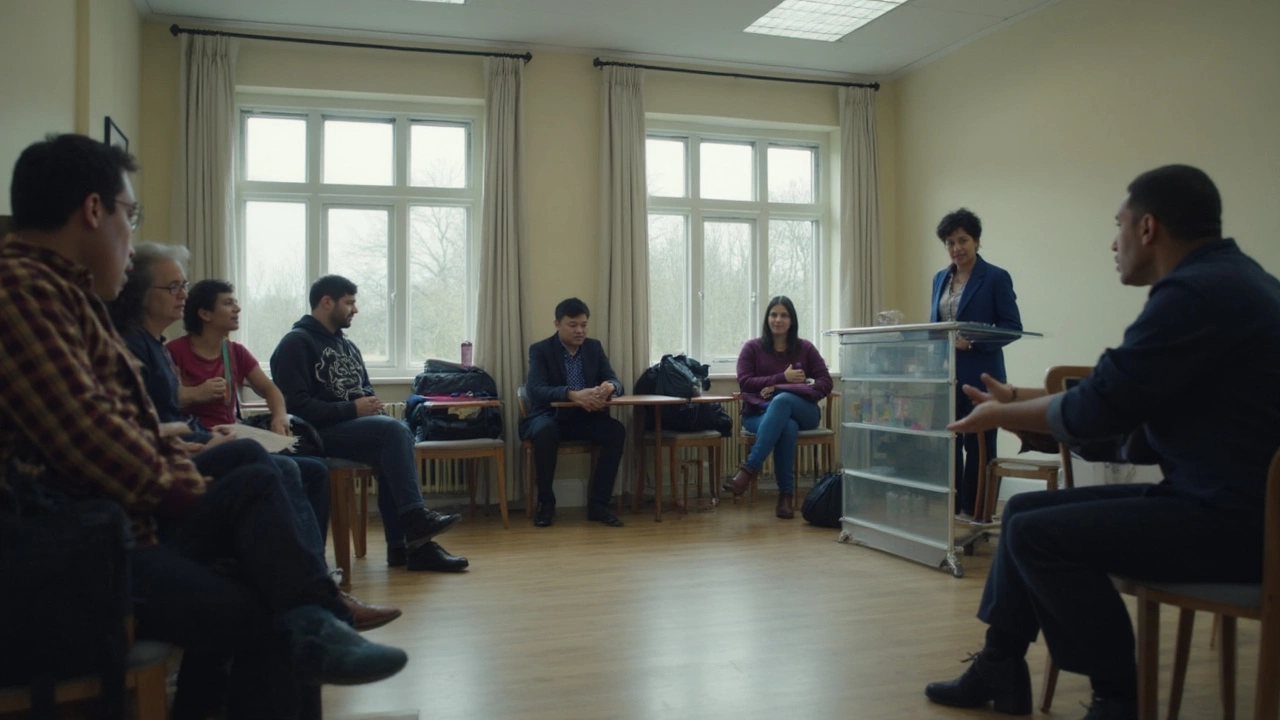
Safe Spots Beyond Shelters
Not everyone can or wants to stay in a homeless shelter. Maybe shelters are full, you’ve had a bad experience, or you simply want more privacy. Either way, you’ve got a few other options that people use when things get really tight.
Public places that are open all night can feel like a lifesaver. Here’s where folks usually go:
- 24-hour diners or fast-food chains: It’s not comfy, but nursing a cup of coffee can give you a spot to rest for a while. Choose busy places—there’s safety in numbers, and you’re less likely to get noticed or hassled by staff.
- Hospital waiting rooms: Some hospitals let people hang out quietly, especially if you look like you’re waiting for a loved one or aren’t causing trouble. Be respectful—security can ask you to leave if things get crowded.
- Public transportation terminals: Big city bus or train stations often stay open late or all night. People come and go, so you can blend in for a bit, but keep your belongings close.
- Libraries (during the day): Most city libraries are welcoming and give you access to warmth, restrooms, and sometimes even free computer use. Some places have special outreach for the homeless.
If you’re looking for a spot to sleep outside, safety is priority one. A few tips from folks who’ve been there:
- Try to sleep in groups when you can—there’s solid safety in numbers.
- Avoid dark, isolated parks. Well-lit spots near cameras or in busy areas are safer, even if they’re louder.
- Hide your stuff but never lose track of it. If you use a backpack, loop the straps through your arm.
Some churches open their doors for overnight shelter on specific nights. It’s worth calling around—don’t be shy about asking if you don’t see info posted online. Every city is a bit different with what it offers.
Here’s a quick glance at where people usually go when finding help homeless is urgent, based on 2023 street outreach reports:
| Type of Spot | Time Accessible | Safety Level | Notes |
|---|---|---|---|
| 24/7 Diners | Anytime | Medium | Need to buy food or drink; can get asked to leave |
| Hospitals | Anytime | Medium-High | Quieter but more supervised |
| Transportation Terminals | Often Overnight | Medium | Stay alert, keep bags close |
| Libraries | Daytime | High | No overnight option |
| Outdoor Hidden Spots | Anytime | Low | Use as last resort, go in a group if possible |
It’s not just about where you crash—you want to keep your phone charged, find food, and keep clean. Places with public restrooms like rec centers, gas stations, or malls can help you stay one step ahead. Remember, every city’s rules are different, so what works in Chicago might not fly in Miami. If you find a solid spot or resource, share it. That’s how people get by.
What You Need to Bring and Know
Before showing up at a homeless shelter, it helps to pack smart and know what’s expected. Shelters aren’t hotels—think basic and practical. Most will give you a bed, maybe a blanket, but not much beyond that. If you can, bring your own essentials since you never know what might not be provided.
- ID or Documents: Having an ID speeds things up a lot. Many homeless shelters require it for check-in or to help you connect with services. If you don’t have one, some places will still let you in, but it makes things trickier.
- Medication and Health Supplies: If you need medication every day, keep it close. Shelters usually don’t have secure lockers or medicine storage, so keep your meds handy at all times.
- Personal Hygiene Items: Bring soap, a toothbrush, toothpaste, wipes, and a small towel if possible. Most shelters hand out some hygiene kits but supplies run out quick.
- Change of Clothes: Extra socks and underwear will save your life, especially if laundry isn’t available. Even just one change makes a difference.
- Chargers: A phone charger is gold. Many shelters have a few outlets, and folks line up to use them, so having your own helps.
- Snacks and Water: Not every homeless shelter has food around the clock, especially during late hours. Non-perishable snacks and a bottle of water can get you by if you miss meals.
Rules in shelters can surprise people. Curfew is standard—most want you checked in before a certain hour, or you lose your bed for the night. There are usually zero alcohol or drugs policies, and you can get kicked out fast for breaking them. Think twice before bringing valuables, because most shelters can’t keep stuff locked up for you.
| Item Needed | Why It Matters |
|---|---|
| ID/Passport | Faster check-in, help with services |
| Medication | Stay healthy, especially with chronic conditions |
| Phone/Charger | Contact family, job searches, emergencies |
| Hygiene Kit | Prevents sickness, more confidence |
| Change of Clothes | Cleanliness and comfort |
One more thing that catches people off guard: some homeless shelters ask for a small fee after a few days, or your stay might only be for a few nights. Always ask how long you can stay and what their rules are up front. Knowing this stuff ahead of time takes a little stress out of the first night.
Extra Resources and Support
If you’re searching for more than just a bed, there’s a surprising amount of help out there. Homeless shelters are just the start—lots of other groups and programs can pitch in when you’re going through a rough patch. Knowing what’s available can mean the difference between just surviving and getting back on your feet.
Most communities have what’s called a "211" hotline you can dial for free. This number connects you to local resources, from food pantries to rental help and even emergency hotel vouchers. If you’re not near a phone, libraries and community centers almost always have lists of nearby spots to get help for homeless folks. They’ll point you to the nearest drop-in centers, bathrooms, and safe dayspaces—places to charge your phone or get a hot meal.
Here’s what you should check out if you’re looking for more support:
- Food Banks and Pantries: Groups like Feeding America list locations across the country. Some pantries don’t even require ID.
- Medical Clinics: Health Care for the Homeless programs offer free or cheap check-ups. Many areas have mobile clinics that park outside homeless shelters once a week.
- Legal Services: If you’re dealing with fines, tickets, or custody stuff, look for Legal Aid or local "Street Law" clinics.
- Job Help: Workforce centers sometimes have programs for folks with housing issues. They’ll help you set up an email or even print a résumé for free.
- Showers and Laundry: Lots of churches, YMCAs, and some city rec centers let you use their facilities if you ask. Hygiene kits are available at many shelters.
Plenty of big cities publish resource guides, but your phone’s a lifeline too: Google "homeless resources near me" or use apps like "Find Shelter" from HUD. If you need a safe space for the night and can’t find an official homeless shelter, some transit stations and hospital waiting rooms might let you stay without the hassle, though these aren’t long-term solutions.
| Popular Resources | What They Offer | How to Find |
|---|---|---|
| 211 Hotline | Connects to shelters, food, and crisis support | Call 211 from any phone |
| Feeding America | Food pantries and free meals | feedingamerica.org |
| Health Care for the Homeless | Medical and mental health care | Local clinics or online search |
| Legal Aid | Legal help for civil issues | legalaid.org |
Bottom line: Don’t try to tough it out solo if you don’t have to. There’s more out there than just homeless shelters—reach out and see which resources actually work for your situation.

